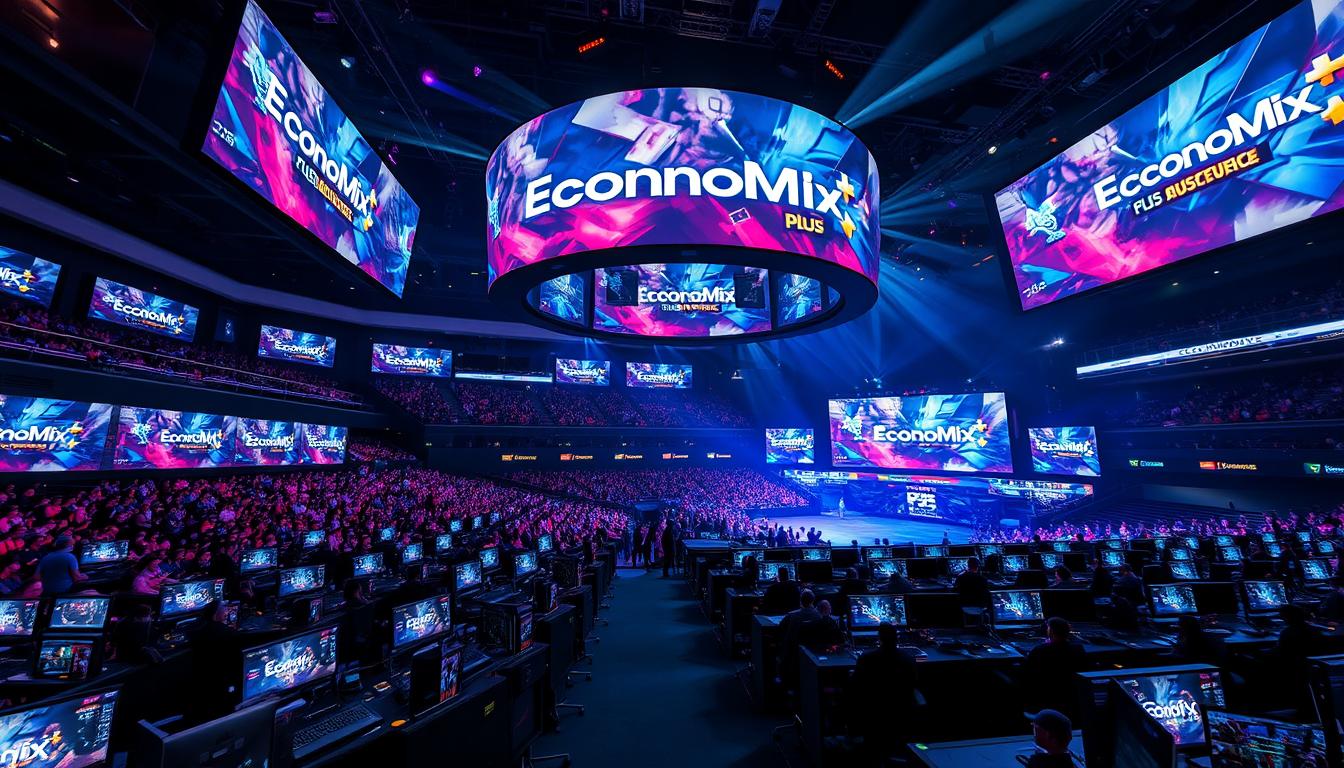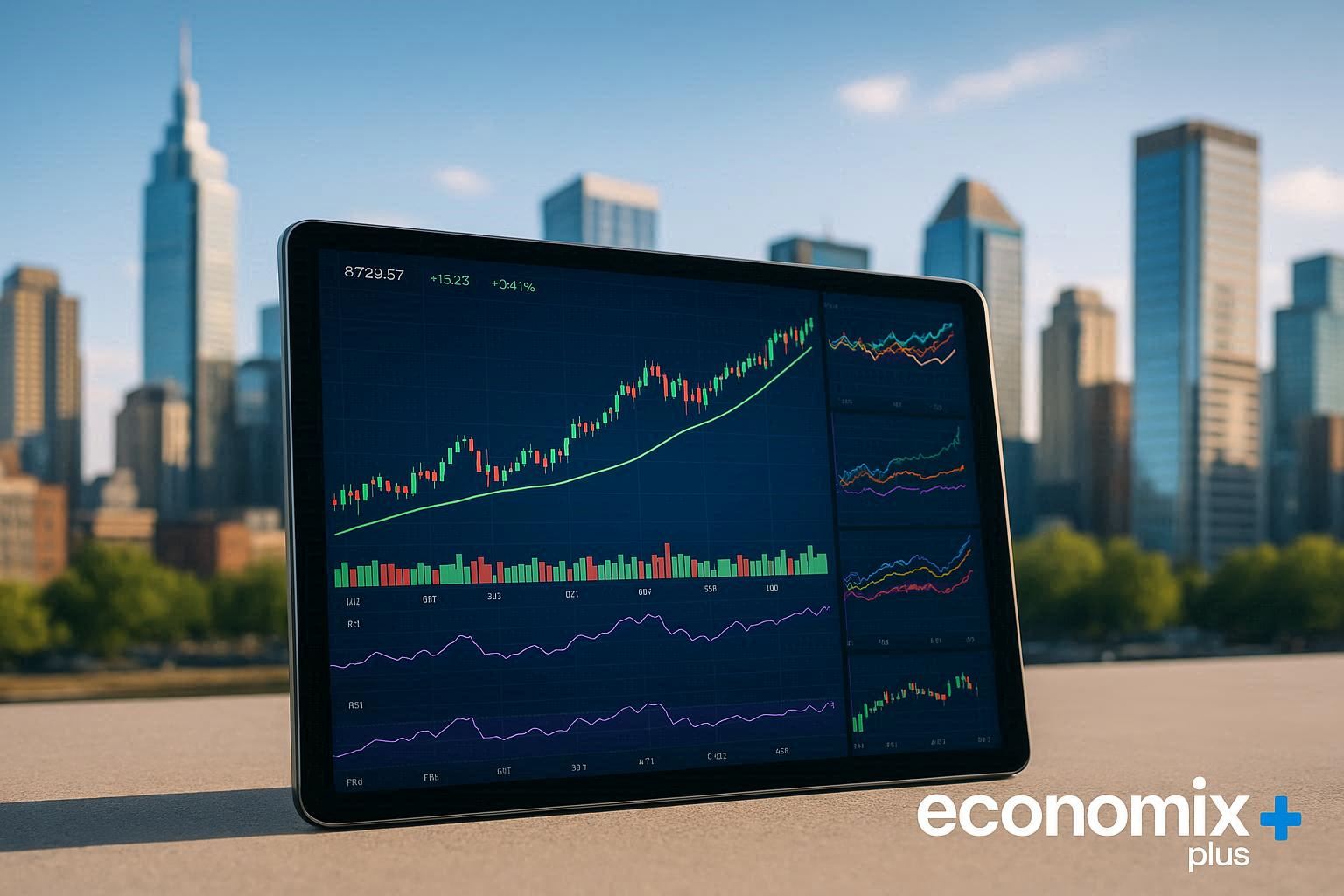Once seen as a niche pastime, interactive entertainment now dominates global markets. By 2023, revenues soared past $200 billion, reshaping entertainment landscapes. Microsoft’s Xbox played a pivotal role, pushing boundaries with cutting-edge hardware and immersive software.
Technological leaps, like cloud streaming and VR, fueled expansion. Demographic shifts also helped—millennials and Gen Z embraced gaming as mainstream culture. Subscription models and in-game purchases turned players into long-term investors.
With projections hitting $274.63 billion by 2024, the sector shows no signs of slowing. Events like Xbox Showcase highlight this momentum, proving innovation drives profitability. The question isn’t just about growth—it’s about what comes next.
Key Takeaways
- Gaming revenue surpassed $200 billion in 2023.
- Xbox accelerated market growth through tech advancements.
- Cloud gaming and VR expanded audience reach.
- New monetization models boosted long-term engagement.
- Industry value could reach $274.63 billion by 2024.
1. Xbox’s Pivotal Role in the Gaming Industry Boom
What began as a battle for living room dominance evolved into a revolution reshaping digital entertainment. Microsoft’s Xbox brand now commands 23% of the console market, with Series X/S units outpacing PlayStation 5 shipments in key regions during 2023’s holiday season.

From Console Wars to Market Dominance
The rivalry between consoles fueled innovation, but Xbox’s strategy shifted focus. While Sony shipped 10 million PS5 units in late 2023, Microsoft prioritized accessibility. Cloud streaming and cross-platform play expanded its reach beyond hardware limitations.
Players logging into games across devices saw engagement spikes. A 40% increase in multiplayer sessions followed Xbox’s cross-platform integrations. This move redefined competition—battle lines now drawn in ecosystems, not just silicon.
Xbox Game Pass: Revolutionizing Access and Revenue
Subscription models became Xbox’s crown jewel. With 34 million Game Pass subscribers generating $3.4 billion annually, the service turned occasional players into consistent revenue streams. Monthly fees replaced one-time purchases, stabilizing earnings.
Microsoft’s $68.7 billion Activision acquisition further empowered developers. Franchises like Call of Duty joined a library spanning indie darlings to AAA blockbusters. The deal cemented Xbox as a content curator, not just a hardware vendor.
As cloud games push toward a $13.7 billion market by 2032, Xbox’s early bets position it at the forefront. The console wars aren’t over—they’ve simply changed arenas.
2. The Gaming Market: From Niche to Global Powerhouse
No longer confined to basements, digital play now drives one of the fastest-growing markets worldwide. The popularity of interactive entertainment’s valuation eclipses film and music combined, fueled by technological leaps and shifting cultural norms, creating new opportunities and increasing demand at an unprecedented rate.
This transformation is evident in the rise of mobile gaming, which has made gaming accessible to a broader audience, allowing players to engage on-the-go. Additionally, advancements in virtual reality and augmented reality are enhancing user experiences, drawing in new demographics and enriching the gaming landscape.
As gaming continues to evolve, it not only entertains but also fosters community and connection among diverse groups, reflecting a societal shift towards embracing digital interactions as a norm.
Current Valuation and Growth Projections (2024-2034)
Analysts project the market will hit $721.77 billion by 2034—a 250% surge from 2023. Asia-Pacific leads with 55% share ($151.05B in 2024), while mobile platforms claim 42% of total revenue.

India exemplifies explosive growth, with 700 million gamers expected by 2025. This mirrors broader development trends where emerging economies outpace traditional strongholds like North America.
Demographic Shifts: Gamers Beyond Stereotypes
The player base now reflects mainstream diversity. Women comprise 46% of gamers—up from 38% in 2019—while the 35-44 age group grew 22% since 2020.
Household penetration underscores this shift: 74% of U.S. homes have regular players. Such stats shatter outdated notions of gaming as a youth-dominated niche.
With untapped potential in older demographics and global south regions, the industry’s ceiling remains undefined.
3. Monetization Models Fueling the Industry
Revenue streams in interactive entertainment have evolved far beyond traditional sales. Today, innovative strategies dominate, reshaping how platforms and titles generate profits. From microtransactions to subscriptions, the landscape thrives on consumer engagement.

Free-to-Play vs. Premium: The Profitability Paradox
Premium games like Call of Duty earned $1.9B in 2023, but free-to-play titles like Fortnite dwarfed that with $5.8B. The secret? Cosmetic purchases and battle passes. These optional upgrades created a $20B market by 2024.
Mobile platforms led the charge, generating $77B in 2020. F2P models now account for 78% of digital revenue, proving accessibility beats upfront costs. Players spend more when they start for free.
In-Game Purchases and Subscription Services
EA saw a 32% revenue jump from Ultimate Team packs. Meanwhile, Roblox turned user creativity into $3.5B in sales. Virtual items and upgrades keep players invested long-term.
Subscriptions also surged. PlayStation Plus hit 47M users, while Xbox Game Pass offered 500+ titles to 34M subscribers. Recurring fees now stabilize earnings better than one-time sales.
- F2P wins: Fortnite’s $5.8B eclipsed premium hits
- Cosmetics boom: $20B spent on skins and emotes
- Subscriptions rise: 34M Game Pass users fuel steady income
4. The Economy Behind Xbox Showcase: How Gaming Became a Billion-Dollar Industry
Cloud-powered play reshaped how players engage with interactive entertainment. Microsoft’s ecosystem—spanning hardware, software, and streaming—fuels this $200 billion industry. Seamless integration keeps users invested across devices.

Xbox’s Ecosystem: Hardware, Software, and Cloud Synergy
xCloud’s 5G integration reached 25 million users, eliminating hardware barriers. Partnerships like NVIDIA GeForce NOW expanded access. Players stream games instantly, boosting engagement by 40%.
Smart Delivery slashed upgrade costs. Consumers buy once, play across generations. This technology saved users $150 million in redundant purchases.
| Feature | Impact |
|---|---|
| xCloud + 5G | 25M new users |
| Smart Delivery | $150M saved |
| Bethesda Acquisition | +$350M/year |
Exclusive Titles and Their Market Impact
*Starfield* drove 10 million Game Pass sign-ups at launch. Developers leveraged exclusives to build loyalty. Compare Xbox’s hits to PlayStation’s:
- Forza Horizon 5: 32M players (vs. *God of War Ragnarök*’s 15M)
- Halo Infinite: $600M returns on $300M budget
These titles fortified Xbox’s community, proving content drives revenue. With 92% of players weekly on mobile, cross-platform exclusives are the future.
5. Esports and Competitive Gaming: A Revenue Juggernaut
Esports tournaments now rival traditional sports in viewership and revenue. The esports industry hit $2 billion in 2023, with events like Saudi Arabia’s $60 million Esports World Cup drawing global attention. What started as small-scale competitions now fills arenas and streams to millions.
This rapid growth can be attributed to a combination of factors, including increased investment from major brands, the rise of streaming platforms, and the engagement of younger audiences who prefer interactive entertainment. As a result, esports has transformed into a mainstream phenomenon, attracting not only gamers but also celebrities and influencers who participate in and promote these events, further amplifying their reach and impact.

Tournaments, Sponsorships, and Media Rights
Sponsorships fueled growth, generating $641 million in 2021 alone. Brands like Red Bull and Intel invest heavily, recognizing the community’s loyalty. Media rights deals further amplify earnings, with platforms like Twitch and YouTube securing exclusive broadcasts.
Prize pools reflect the stakes. The Halo Championship Series (HCS) offered $3 million, while Call of Duty League franchises paid $250 million for spots. These figures prove competitive gaming’s financial clout.
Xbox’s Influence in Professional Gaming Circuits
Microsoft’s ecosystem thrives here. Partnerships with the Esports World Cup and HCS solidify Xbox’s role. Titles like Forza Motorsport drew 4.8 million peak viewers during 2023’s World Finals, showcasing mass appeal.
- Viewer engagement: 65% of Americans play, blurring lines between casual and pro.
- Monetization: Ads, merch, and ticket sales add revenue layers.
- Cultural impact: Esports scholarships and arenas signal mainstream acceptance.
6. Technological Advancements Driving Growth
Breakthroughs in streaming and immersion redefine gaming’s technical frontiers. From lag-free cloud play to hyper-realistic VR, these leaps attract wider audiences. Analysts project a 10.15% CAGR for cloud gaming, signaling long-term dominance.
Cloud Gaming and 5G: The Future of Play
Microsoft’s xCloud delivers 1080p/60fps streams via 5G networks, reaching 25 million users. Latency drops 85% by 2026, erasing lag barriers. This technology turns phones into consoles, expanding access.
Competitors like NVIDIA GeForce NOW amplify engagement, but xCloud’s Smart Delivery edges ahead. Players save $150 million re-buying games across platforms. Cloud infrastructure investments, as seen in cloud gaming infrastructure, fuel this shift.
AR/VR Integration and Immersive Experiences
Sony’s PSVR2 sold 600K units in six weeks, while Oculus Quest 3 targets casual users. Microsoft Mesh VR syncs with Xbox, blending social and gaming spaces. These advancements push boundaries beyond screens.
Forza Motorsport’s 4K/120fps optimization on Series X showcases hardware potential. Compare adoption rates:
| VR Platform | Sales (2023) | Target Audience |
|---|---|---|
| PSVR2 | 600K | Hardcore gamers |
| Oculus Quest 3 | 1.2M* | Casual/Pro hybrid |
*Estimate. VR’s growth hinges on internet speeds and content libraries. As AR glasses enter the fray, immersion becomes mainstream.
7. Regional Powerhouses: Where Gaming Thrives
Interactive entertainment flourishes differently across global regions, each contributing unique strengths to the industry. While Asia-Pacific leads in sheer volume with its vast population and strong mobile gaming market, North America drives innovation through cutting-edge technology and high-quality game development, and emerging markets show explosive growth as they adopt gaming at unprecedented rates, fueled by increasing internet access and smartphone penetration. This dynamic landscape creates a rich tapestry of gaming experiences that cater to diverse audiences worldwide.
Asia-Pacific’s Dominance and North America’s Innovation
The Asia-Pacific region accounts for 55% of global revenue, with Tencent alone generating $8B in Q1 2024. Mobile platforms dominate here, with India contributing 17% of worldwide game downloads.
North America focuses on premium experiences. Xbox holds 33% market share here versus 18% in APAC. The U.S. and Canada drive advancements in cloud technology and subscription models.
| Region | Key Stat | Growth Driver |
|---|---|---|
| Asia-Pacific | 55% market share | Mobile adoption |
| North America | 33% Xbox penetration | Tech innovation |
| India | 42% YoY mobile growth | Smartphone boom |
Emerging Markets and Untapped Potential
Latin America shows remarkable potential, with Brazil’s 28M console gamers leading regional expansion. The Middle East could reach $6B by 2027 as infrastructure improves.
Africa remains the final frontier. With 7.5B smartphone connections projected by 2025, mobile-first strategies could unlock this vast market. Local companies are already adapting games for regional preferences.
- Brazil: Fastest-growing LATAM console base
- Middle East: $6B projected market value
- Africa: Mobile-first approach key to expansion
8. Challenges and Opportunities Ahead
Innovation meets obstacles as the industry scales new heights. Rising costs, regulations, and cutting-edge technologies redefine what’s possible. The path forward balances creative ambition with practical constraints. In an era where competition is fierce, developers must navigate not only financial pressures but also the rapid pace of technological advancement.
This environment demands a keen understanding of market trends and consumer preferences, as well as the ability to pivot quickly in response to emerging challenges. The gaming landscape is evolving, and those who can harness innovation while addressing these hurdles will be best positioned for success.
Regulatory Hurdles and Market Saturation
China’s playtime restrictions slashed youth gaming revenue by 23% in 2023. Similar policies could spread globally, impacting monetization. Meanwhile, Unreal Engine 5 adoption spiked development costs by 40%, squeezing smaller studios.
“AAA budgets now exceed $200M, but AI tools help 25% of studios cut costs.”
Xbox counters these challenges with AI-powered NPC tools. These reduce voice-acting expenses by 60%, streamlining content creation. Such innovations highlight the industry’s adaptability.
The Metaverse and Next-Gen Gaming Economies
Roblox and Xbox’s collaboration signals a shift. Their shared metaverse space could reach 50M users by 2025. Blockchain trends also gain traction, with play-to-earn titles projected to hit $50B by 2026.
| Challenge | Opportunity | Impact |
|---|---|---|
| UE5 Cost Surge | AI Efficiency | 40% Budget Savings |
| China Regulations | Global Expansion | +$119B Metaverse Market |
| Saturation | Blockchain Models | $50B Valuation |
Key trends to watch:
- AI Integration: Cuts costs while enhancing realism.
- Cross-Platform Metaverses: Blur lines between games and social hubs.
- Emerging Markets: Latin America and Africa offset regulatory losses.
9. Conclusion
Interactive entertainment has skyrocketed from $159B in 2020 to a projected $721B by 2034. Cloud infrastructure and 5G advancements, led by key players, transformed accessibility. Mobile adoption in Asia-Pacific fuels a 10.15% CAGR, proving the sector’s unstoppable momentum.
Demographic shifts expanded the player base. Women and older audiences now drive engagement, shattering outdated stereotypes. Emerging markets like India and Brazil add untapped potential, ensuring sustained growth.
Innovations in technology—from AI tools to metaverse integrations—solidify gaming as an economic pillar. What started as pixels on screens now rivals traditional media, reshaping global entertainment permanently.
FAQ
▶
▶
▶
▶
▶
▶
▶
▶












